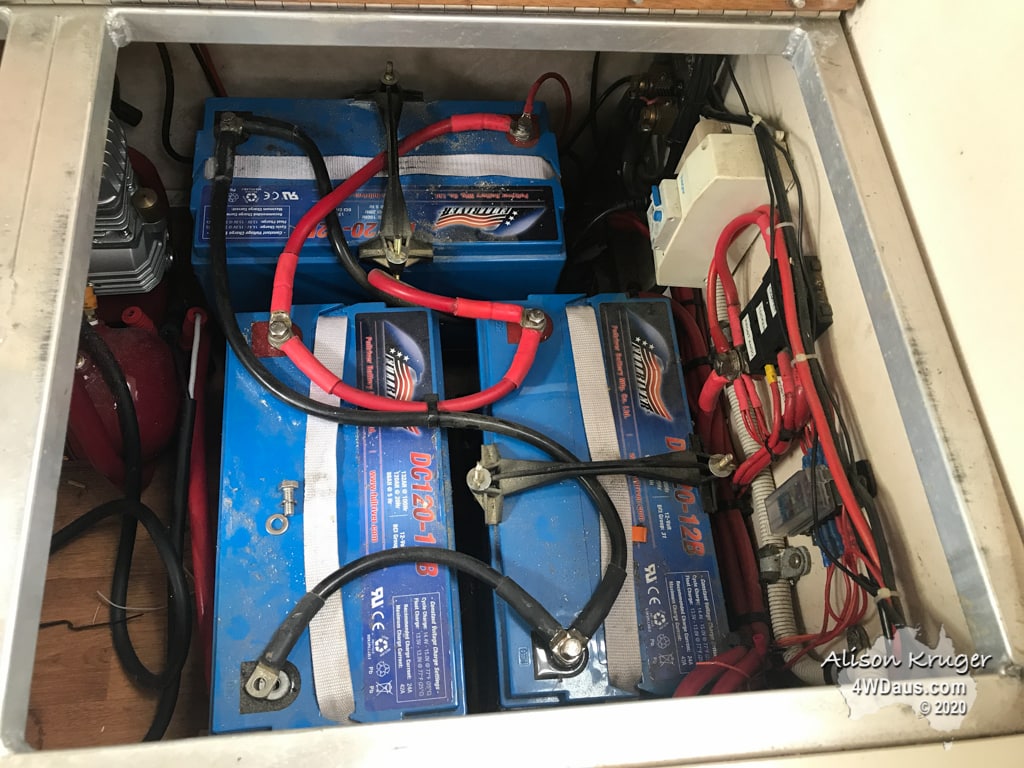Many times we are asked what solar system are we running and what are the technical details. Here is some information you may find interesting.
When we purchased the Amesz we found our batteries were always close to fully discharged. At that point we had 130 watt solar panels and 2 x 100 amp hour lead batteries. Additionally, our fridge door had been missaligned and this was making the Virifrigo fridge run continuously to keep its cool. This quickly drained the batteries and meant the fridge became warm at night.
Eventually, the missaligned door was found and corrected. Other advice we were given was to ensure the wiring to the fridge was heavy duty. With this in mind we decided to upgrade the entire camper electrical system. First step was to increase the storage system to 360 amp hour AGM batteries (ie 3 x 120). We had excellent results from the AGM battery we took around Australia in 2006. Solar technology has also improved greatly since the Amesz was built and we upgraded the panels to 350 watts.

The lighting is the Amesz was fluro and hallegen when built and this has been upgraded to LED. This now means if we were to put on every LED light, we now use half the power we used to. Also the quality of the LED lights mean we actually need less LED lights on at night. This has been excellent for battery consumption and has meant we can now run other 12v compoentry like our 12v fans all night if desired.
Our Bundaberg 2014 trip is the first major outting for the new system and can report that is is working well. The fridge is now cycling correctly and consuming about 20 amp hours of power during the night. Other night activities is consuming about 5 amp hours. This means our batteries have about 335 amp hours left in them to recover the next day back to 360 amp hours. The solar panels generally have the batteries fully charged by 11am. This then raised the question, what to do with the excess generation. This is used to keep our starting batteries in good condition, with the system charging them when there is capacity.
So in a fairly open area, in Spring, the system is reovering back to fully charged in good time. This allows for the odd few overcast days should the rain close in. We also hope the system will support itself in winter when the sun is lower in the sky. If it can not, then the system has been designed to charge off the vehicle engine if required. In tests we have found this to be 50 – 70 amps per hour depending on engine revs.
Editor note, 2021 this system has been upgraded. Solar and battery upgrade
